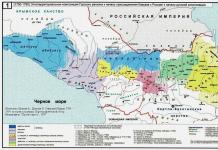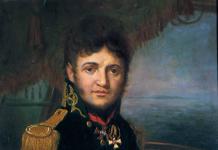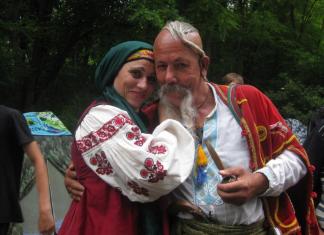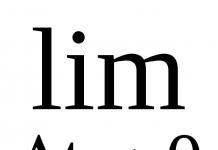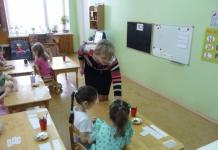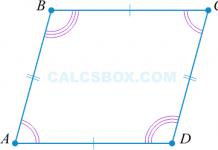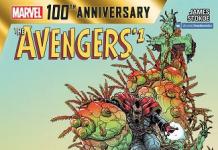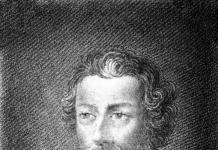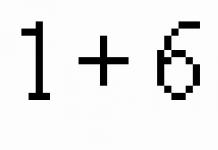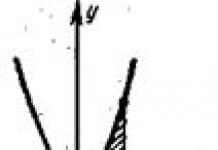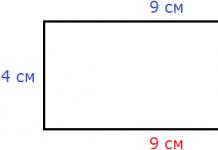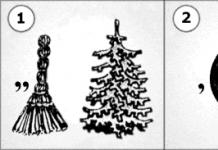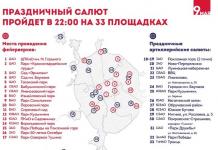At the age of seven - nine years the child is going through a difficult period of his reading development: the transition from the listener, the viewer to the reader. The process of mastering the technique of reading at first slows down the creative perception of schoolchildren. Many of them focus entirely on overcoming these difficulties. Their mental efforts are aimed at reproducing the graphic image of the word into sound, while the essence of reading lies in understanding the meaning of the word in context, in the emotional inclusion of the reader in the world of images. Some decline in interest in the book in this period is a temporary phenomenon. So that it is not protracted, the child needs help. Coercion, violence, pressure can forever discourage the craving for a book.
It is necessary to read more aloud, discuss what has been read, stimulate creative activity on this basis: drawing, modeling, etc. Illustrations should be actively used - teaching children to consider them, correlate them with the text. For six- and seven-year-old children with poor reading skills, it is appropriate to offer books both for independent reading and for reading with their parents.
The cooperation of the child with adults, based on the material of the book, plays a decisive role in shaping the relationship to the book, in awakening love for it. The credulity of a small reader to an adult facilitates their mutual communication.
A young reader at the age of seven to nine years is characterized by a "presence effect". “When you read a book, you feel that you yourself are there, as if you live among the heroes and participate in their affairs with them.” Psychologists call this feature of perception active imagination. It is no coincidence that a child willingly draws, sculpts, and plays in the wake of what he has read. Having finished reading, he lives the life of heroes for a long time and often continues the book in his imagination.
A child of seven or nine years old feels the word subtly. The artistic detail in the text plays for him significant role. The young reader fills the retelling of what he has read with “live” details, each of which is full of special significance for him.
And one more feature of the perception of younger students attracts attention - the ability to recognize themselves and others in the book they read.
The main directions in the development of the genre of Russian literary fairy tales of the 20th century. Changing the canons of fairy tale narration. Thematic diversity of children's prose tales of the 20th century.
Fairy tale in literature 20th century. represented by many genres. To comprehend it, it is preferable to single out historically established periods: the fairy tale of the “Silver Age” (conditionally - the pre-revolutionary fairy tale of the 20th century), the Soviet literary fairy tale (20-80s) and the fairy tale of the 90s. At any time, the fairy tale actively perceived the problems of time and the "addiction" of literature. So, by fabulous means in the 20-40s. depicted the revolutionary struggle and the restoration of social justice, the denial of bourgeois values, then the science fiction innovations of the 50-60s, in the 80s-90s. issues of humane treatment of a person, the assertion of eternal moral values and the denial of the bureaucratic "death" of the human soul. Most recently author's fairy tale often "dissolves" in the fantastic-allegorical worlds of "fantasy".
The literary fairy tale of the Silver Age is one of the stages in the history of the literary fairy tale, the last period in the history of the classical literary fairy tale, which adopted the traditions of the writers of the 19th century. Early 20th century became the time of the interest of Russian word artists in mythology, in myth-making, the time of the birth of many typological "lines" and in the development of a literary fairy tale, then transformed in the Soviet fairy tale (for children and adults) and presented in new ways in fairy tales last decade 20th century This is the time of the appearance of the first works (fairy tales-travels) by M.M. Prishvin; fairy tales by A.M. Gorky, A.N. Tolstoy (the cycles "Sunny Songs", "Beyond the Blue Rivers", collections "Mermaid Tales" and "Magpie Tales"; the first fairy tales for children); fabulous mythological works of A.M. Remizov ("Salting"; "Rusalia", "Among Murya", "Tales of the Russian people"); fairy tales J1.A. Charskaya ("Tales of the Blue Fairy").
The tales of the writers of the Silver Age reflected the peculiarities of the literature of that time: a sense of the boundary, a sense of instability, the fragility of familiar values, the neo-romantic aesthetics of mystery, miracle, symbolism, the desire to create new art while simultaneously focusing on many traditions. Multi-genre was also inherent (fairy tale-short story, fairy tale legend, fairy tale parable, fairy tale lyrical miniature, fairy tale myth, etc.). Reasons for the appeal of the authors of the first quarter of the XX century. to the fairy tale are due not only to "...the attractiveness of the aesthetics of miracle and mystery inherent in this genre, the ability to create your own myth, to show the sophistication of thought and fantasy", but also the desire to feel, artistically recreate the depths of the soul and history of the Russian people.
Problems in teaching reading and their correction in younger studentsEarly childhood development means early learning reading. Most of the children entering the first grade can read. But the ability to pronounce words loudly and correctly when reading is not equal to good reading comprehension.
The program becomes more complicated, the texts are more voluminous and more difficult, there comes a moment when the teacher draws the parents' attention to the child's problems: he does not understand what he read well, he reads as he has to and as he understands.
To understand the reasons, let's go back to early childhood, to the origins of mastering mother tongue and literature.
They talk a lot with a small child, read nursery rhymes, poems, then fairy tales. Moreover, all communication and reading has a bright emotional coloring. Next is the school. The first texts from the school curriculum are often simple and uninteresting.
On the Internet, at one of the parent forums, I asked parents a question: what did your children not like / was it not interesting to read in elementary school? The parents responded as follows:
“I didn’t like Russian folk tales offered in textbooks.
Both of mine said that they knew all this and listened to or read before school.
There are a lot folk tales, which are not so widely known - children read them with pleasure at the same age.
The younger one was annoyed by a large number of "meaningless" poems - he does not like Zakhoder with his "Imagination" and other puns
: "In 1st grade, my 6-year-old was pissed off folk rhymes and poems for one-year-olds. I was indignant that I had to read this. I said, they say, it’s done so that everyone knows how to entertain their kids when they grow up. otherwise, by the age of 6-7, many usually don’t remember “patties-patties”, otherwise they will remember, they will know how to entertain their children later. I couldn't think of any other justification. Why is this really, I don’t understand. ”
: In 1st grade, he had already read a couple of Harry Potter books and a bunch of other long ones and he interesting books then in general he didn’t like anything in the textbook ... because it’s boring ... he especially didn’t like all sorts of Russian fairy tales and epics ... he really didn’t listen to them in childhood ”
“Completed first grade. According to my feelings, all the texts did not arouse interest. From the point of view of developing interest in reading, I do not consider them at all. It even became strange from such a formulation of the question. For a child, the school curriculum is generally bypassed, other preferences "
“In general, there is duplication of works in the kindergarten and school curriculum (almost the entire Chukovsky, a lot of Krylov, Marshak, Mikhalkov, Barto)
and there is a duplication of the beginning and high school(in several programs in the 5th grade there are "Humpbacked Horse", "Grandfather Mazai and Hares", "The Tale of the Sleeping Princess" and "The Tale of Tsar Saltan")
It would be good to eliminate this duplication.
“In any case, I cannot consider school texts from a literature textbook (any) as the main option for forming interest in reading. This is unrealistic, because. tastes and interests are different and most often lie outside the field school course. To my great regret.
Closest to the idea interesting reading the Buneevs turned out to be at the lessons (School 2100 "
From the answers of the parent, we see that the texts for reading must be selected carefully, taking into account the changing environment.
Parents try to cover everything and everyone: sports, music, theater .. There is a catastrophic lack of time for reading. Interest in reading begins to decline,
Disappears and installation on reading comprehension and extraction of new meaning. Gradually, reading from "pleasure" turns into the category of "duties", part of doing homework.
The gradual increase in the volume of texts and their number, the lack of free time leads to the formation of "superficial" reading, without understanding what was read.
This also includes the so-called “reading technique”, which forms an error-free reading without taking into account the content of what is read. As Sh.A. Amonashvili pointed out: “When acquiring the skill of reading by the method of repeated reading, the child involuntarily learns that the content of the text must be understood during repeated readings and therefore it is not at all necessary that at first, during the first reading, try to comprehend what has been read. Such an attitude, if it will also gain a foothold over time due to the stability of experience (this happens with many children), it will interfere with the full, conscious perception of what is read without returning to the text again. )
So, the lack of a child’s free/personal time for home reading, the enthusiasm of parents and the school for the technical side of reading, reading without attention to the semantic side of what is read leads to a sharp decrease in the quality of reading in terms of understanding the content of what is read. To this we can add another discrepancy between the requirements of adults and the level of reading development of the child. And the risk of mindless reading arises whenever the complication of the proposed material for reading or actions implies a serious change in the structure of the child's reading competence.
What to do?
1 Return interest in reading, fill in the missing motivation and form mechanisms for monitoring reading comprehension. This can be done using reading as a form of joint leisure with the child: we read, discuss, ask questions and look for answers to them in the text.
Consider some of the techniques for working with text.
Moreover, these techniques are good to use both for children with speech disorders in speech therapy classes, and for everyone else.
Techniques that improve the quality of reading comprehension.
When working with text, you can use several techniques:
1 . "Making assumptions, hypotheses." After reading the title of the text, students, based on personal life experience, observations and their own predictive abilities, make assumptions about what the text will be about. And as you read, hypotheses are tested.
2. "Pictograms".
This technique is very good to use with schoolchildren who do not yet know how to write and read, but perceive the text orally, or with children with bilingualism.
Students, listening to the text, conditionally sketch the meaning of the phrase using pictograms. Then they retell based on the pictograms.
"Yablonka"
(1-2 classes)
An apple tree grew near the house. A strong wind picked up. He began to twist and break it. Kolya brought stakes. The boy tied up the apple tree. Snow fell during the night. Fluffy fur wrapped the tree.
____ ____. |
|||
3 . "Visualization".
After using the memorization technique with the help of pictograms, we gradually move on to the visualization technique.
Closing his eyes, the student listens to the text, which is read by the teacher and represents what he heard in the form of images, a “live picture”. Then the child independently reads and retells the text.
4. "Basic Words".
When reading, supporting (key) words are underlined for better memorization and semantic understanding of the content of the text. Then, using these keywords, the content of the text is retold as accurately as possible.
5. "Graphic model".
When working with textual material, a graphic model is compiled. Important semantic links are singled out, the connection between them is determined, a graphic scheme of the text is drawn up. This diagram serves as a support for reading comprehension and further retelling.
6. "Reference signals". Students are invited to read the text and then take notes, but the summary should not contain words and sentences, but only drawings, diagrams, symbols. Then there is a demonstration of the reference signals and a comparison of the results.
7. "Reception of asking questions." Students read the text and ask as many questions as they can. Then some questions are read out, while others can be answered more fully. This technique is very good for children with speech pathology, as they learn not only to read the text, understand the text, but also formulate questions to it.
8 . "Reception of Heuristic Questions". It is supposed to search for information about any event or object under study in the process of answering key questions. Key questions are asked: Who? What? When? What for? Where? How? How? Why? The answers to these questions and their various combinations generate unusual ideas and solutions regarding the object under study.
This method originated in America and was widely used in American schools.
Reading must be effective to improve learning, so students needed to answer 6 simple questions: WHO does WHAT, WHEN, WHY, WHERE and HOW? - and he was called
« Read and Answer Questions: The 6 Questions Method.
9 . "Reception of selection (marking) of text."This approach has several options. Students are encouraged to read the text to subdivide the information contained in it as follows:
Option 1: (for students in grades 1-2) highlight familiar material with a yellow marker, and new, unknown material with a red marker.
Option 2: students 3-8 cells. tick off what they already know; minus sign - what is not known; an exclamation point - something that is interesting to them; question mark put if they have a desire to learn more about something.
3 option. It is suggested that students quickly and carefully read the educational text, then choose and underline main idea or a suitable word that characterizes the given text. Then all answers of students are compared and the best option is chosen.
ten." Story". Students are invited to read the educational text and come up with a fairy tale with any characters and any plot in such a way that its main idea reflects the essence of the educational text. The best ones are read out and selected.
11. "Snowball Reception". For better memorization and understanding of the text, as well as improving the quality of reading technique, students are invited to read the text in the following sequence: first they read the 1st sentence, then 1 + 2 sentences, then 1 + 2 + 3, etc.
12. " Retelling in a circle. On the speech therapy session students read the new text twice, then reproduce (retell) the text clockwise one phrase at a time. Then they read the text again, correct mistakes if they were, or supplement it if something was missed. Retell the text on their own.
13 .“Text extension method”.
Students read the text and memorize 1 sentence at a time. Then they reproduce the text, repeating the sentences said by previous students, and adding their own sentence.
14. Reception "Explain to another."
The text is cut into paragraphs. Each student reads only one paragraph and comprehends it. Then the children retell their comrades in order, so that the entire text is restored in the process of retelling. Students then read the entire text and evaluate their work.
15. "Reception of text recovery".
Collectively (using the assault attack method) restore its sequence. Then the result of the work is compared with the sample.
16. "Cut-Off Reception".
While reading the text, students should
Highlight thoughts and facts that are secondary to the main content and cross out.
17. "Reception of alternating reading with comprehension."
After the student has read a paragraph, it is important to stop and comprehend what has been read. If necessary, note important information in any way. Similar work is carried out after reading each paragraph.
18. "The American Method: A Strategy for Serious Reading".
The following method has also been widely used in the US since World War II. This method was used for rapid development learning abilities. Its goal is "to enable learning better, faster, with greater efficiency." The method turned out to be so useful that it was included in learning programs many colleges and universities in the US. According to psychologists, it gives a recall of 80% of the material after 8 hours against the usual average of 20%.
This method counteracts forgetting by focusing on the essence of the material being studied. It includes a number of steps:
- a quick introduction,
asking questions,
reading marks,
retelling,
Review.
Skim the textfor the purpose of familiarization and identification of its main idea.
Ask questions, i.e. reformulate the subheadings into questions, and then look for answers as you read the text.
Make marks in the text, revealing its structural composition, and at the same time try to find the main ideas that will be the answers to your questions.
Retell these ideas one by one. Make brief notes (you can use keywords, icons, pictograms, etc.).
Immediately review the text, again focusing on the main ideas and the order in which they are presented, i.e. on the internal structure of the text. Pay attention to what you forgot as well as what you remembered.
And finally (this is very important),make your own comments and critiques.Were you able to find answers to all the questions you asked? Give an assessment of the position of the author.
When teaching students (grade 1) to understand and retell the text, the following can be offered algorithm:
- I listen (read) the text.
- I identify actors.
- I put things in order.
4. I retell the text.
Algorithm for working with text. (2-6 cells)
1. Review all the material and highlight what needs to be remembered.
2. Focus all your attention on those objects, phenomena, facts, objects that you need to remember.
3. Find the connection between the phrases in the material - this will help you remember the material better.
4. For better memorization of the material, reduce the information to the limit. You can miss the details, rather than the main point.
5. Use convenient information memorization techniques: key word techniques, visualization, pictograms, etc.
6. Repeat material correctly and on time.
Psychologists have found that after 30 minutes -40% of information is forgotten, the next day - another 34%, after a month - another 21%. With this in mind, it is necessary to repeat:
First time after reading;
Second time in half an hour;
Third time in a day;
Fourth time in 2-3 weeks.
Using only techniques for memorization is not enough. A deeper understanding of the information received is needed.
When working with new information, it is necessary for the student to ask himself the following questions:
What do I already know about this subject or fact;
What can I learn new;
What is my idea of this subject or fact at the present moment;
Who needs it and why;
Where and how can I use it.
- The key to good memory is understanding of the material.
For this you need:
Break the text into semantic parts;
Select the main and secondary;
Determine the logical connections between the parts;
Draw up a diagram, plan, algorithm, etc.
The degree of comprehension and memorization of the material depends on the understanding of the logical connections between the parts.
The main value in memorization is the ability to find differences and similarities in things (especially differences).
When memorizing material, all types of memory (auditory, kinetic, kinesthetic, visual, etc.) should participate. The more types of memory students use when memorizing, the more accurately the material will be preserved, it will be easier to reproduce, and the understanding of its content will be deeper.
Neurolinguists argue that when memorizing a text, the beginning and end are best remembered, so special attention should be paid to the middle when processing the material.
The setting and awareness by students of the task of understanding and memorizing form in children a positive, energetically strong motive for the need to remember, understand educational material.
Schoolchildren can use these methods of working with text on their own when working in the classroom, when doing homework, etc.
Literature.
Amonashvili, Sh.A. Reflections on humane pedagogy. M, 1995.
Goncharova, E.L. Methods for assessing the formation of the basic components of reading activity in children with various developmental disorders // Defectology. -2001No.3-_
Goncharova, E.L. Early stages of reader development. To the theory of the issue / / Defectology. -2007. - No. 1
Kornev, A.N. Dyslexia and dysgraphia in children. - St. Petersburg, 1995
Laylo V.V. The development of memory and literacy. A guide for teachers. M., Drofa, 2001
Rusetskaya, M.N. Experimental study of cognitive causes of reading disorders// Defectology.-2007.-№1
Tikhomirova, L.F. Development of children's cognitive abilities. -Yaroslavl, Academy of Development, 1997
Troshin O.V., Zhulina E.V. Logopsychology. Textbook.-M.Ts.SPHERE, 2005
Introduction
I. Psychological and pedagogical substantiation of the problem of teaching reading to younger students
1.1 Features of training in primary school
1.2 Psychological approach to understanding the essence of reading
1.3 Psychophysiological characteristics of the reading process
II. Theoretical basis teaching reading to younger children school age
2.1 Comparative and critical analysis of literacy teaching methods in the history of pedagogy
2.2 Sound analytical-synthetic method of teaching literacy
2.3 Overview of methods and principles of teaching reading
Conclusion
Bibliography
Applications
Introduction
In order for a child to be successful in school, first of all, he needs to master the basic learning skills: reading, writing and counting. We can say that they are the basis of all education.
Reading is a means of acquiring new knowledge necessary for further education. A student who has not learned to read, or is poorly able to do so, cannot successfully acquire knowledge. After all, the process of schooling always involves independent work children, especially work on the book. Insufficient mastery of the reading technique by students, and most importantly, the ability to understand what they read, will be accompanied by serious difficulties in academic work, which can lead to academic failure.
The problem of teaching reading is one of the most important problems of the pedagogical process and it has always attracted the attention of psychologists and teachers. Many domestic authors dealt with the issues of poor progress of younger schoolchildren and the problem of developing the reading activity of students: P.P. Blonsky, D.B. Elkonin, N.A. Menchinskaya, L.S. Slavina, S.M. Trombach, T.G. Egorov, G.N. Kudina, G.A. Zuckerman. These problems were also considered by many foreign researchers M. Cole, J. Morton and others.
Despite the fact that diagnostic sections conducted in elementary school imply an assessment of the formation of reading skills not only by means of a speed criterion (number of words per minute), but also an assessment of reading comprehension, for many teachers the first criterion is the main one. As psychologist L.V. Shibaev, the reading technique, which the teacher takes care of in elementary school, is considered established, and reading as a full-fledged activity that has the status of a cultural value does not add up. Meanwhile, modern world practice is focused on the criterion of understanding the text. Thus, reading literacy tests, which are regularly conducted in many countries, are based on the reading literacy criterion, which is formulated as “a person’s ability to comprehend written texts and reflection on them, to the use of their content to achieve their own goals, the development of knowledge and opportunities, for active participation in the life of society.
The International Study of Student Educational Achievement (PISA), conducted in 2000 using this system, recorded a very sad result: Russian schoolchildren ranked 27th in terms of reading literacy. In particular, to read at the "highest level" - i.e. “understand complex texts, evaluate the information presented, formulate hypotheses and conclusions”, only 3% of the surveyed were able to Russian schoolchildren. There were 9% of students in Russia who showed a level below the first (includes basic skills: finding simple information explicitly given in the text, interpreting the text in order to determine the main topic), in Russia there were 9%, on average across countries - 6%.
This circumstance forces us to return to the development of criteria for assessing the formation of reading skills.
As a "working" criterion, we propose to use the "reading quality" criterion. Reading quality refers to the ability to read meaningfully.
From the above, it was formulated problem further research: what techniques and methods of teaching will improve the quality of reading for children of primary school age.
object learning is the process of teaching reading to younger students.
Subject: features of teaching reading to younger students.
Target work: the implementation of targeted work on teaching reading to children of primary school age using a variety of techniques and methods.
To achieve the goal of the study, the following were formulated. tasks:
1) To study the psychological and pedagogical literature on the problem of teaching reading to children of primary school age;
2) Determine the role of reading in the development of primary school children;
3) To study the influence of various techniques and methods on the quality of teaching reading to younger students
4) Reveal the level
Hypothesis: we assumed that the quality of reading for children of primary school age will depend on the teacher's use of various techniques and methods in teaching reading to read.
Research methods. In accordance with the tasks set, the following research methods are used:
study and analysis of psychological and pedagogical literature on the research problem;
individual conversations with children;
Psychological and pedagogical experiment (stating);
quality and quantitative analysis the results obtained.
This work is not deep. scientific research, but, nevertheless, claims to be a small manual for teaching children of primary school age to read.
Chapter 1. Psychological and pedagogical substantiation of the problem of teaching reading to younger students
1. 1 Features of education in primary school
"Junior school age is the period in the life of a child from six to ten years old, when he is in primary school." "During this period, teaching is the main activity in which a person is formed." In the elementary grades, children begin to learn the beginnings of the sciences. At this stage, the intellectual-cognitive sphere of the psyche is predominantly developing. At this stage, many mental neoplasms appear, old ones are improved and developed. "The school period is characterized by the intensive development of cognitive functions, sensory-perceptual, mental, mnemonic, etc."
Usually a student elementary school willingly goes to this educational institution. For pupils of the first-fourth grades, the striving for the position of a schoolboy is characteristic. . During the first days of school great importance has experience acquired by the child at home. Previously, a small preschooler was the only and unique being, but with admission to school, he finds himself in an environment where around him are the same "unique and only". Except having to adjust to the rhythm school life and new requirements, to master the space of the school, to master the ways of self-organization and organization of their time, the younger student must learn to interact with classmates. But the main task of the younger student is to succeed in school.
It is also important to note that at the stage of primary school age, the child experiences the so-called crisis of seven years. The child's perception of his place in the system of relations changes. "The social situation of development is changing, and the child finds himself on the border of a new age period". The child is aware of his place in the world of social relations and acquires a new social position of the student, which is directly related to learning activities. This process radically changes his self-awareness, which leads to a reassessment of values. Study becomes of great importance for the student, therefore, for example, the chain failures of the child in this leading activity at this stage can lead to the formation of stable complexes or even a syndrome of chronic underachievement.
The most important personal characteristics of a younger student include: trusting obedience to authority, increased susceptibility, attentiveness, a naive-playful attitude to much of what he encounters ". In the behavior of the student primary school obedience, conformity and imitation are visible.
Learning at school is quite new for children and therefore interesting activity However, they also face a number of difficulties. Schoolchildren initially, of course, do not know how to independently formulate learning tasks and perform actions to solve them. For the time being, the teacher helps them in this, but gradually they acquire the appropriate skills themselves (it is in this process that they develop independently carried out educational activities, the ability to learn). . Children at this age have a share of impulsiveness, capriciousness, stubbornness. Volitional processes are not yet sufficiently developed in younger students. Gradually, the ability to show strong-willed efforts appears in the mental activity and behavior of schoolchildren. Schoolchildren form voluntary mental actions, for example, intentional memorization, volitional attention, directed and persistent observation, persistence in solving various problems. Therefore, the importance of evaluating the results of the student's activities by adults is increasing. The educational and cognitive activity of a student, as socially and individually significant, essentially has a dual stimulation: internal, when the student receives satisfaction by acquiring new knowledge and skills, and external, when his achievements in cognition are evaluated by the teacher.
Evaluation by the teacher is an incentive for the student. This assessment also greatly affects the student's self-esteem. Moreover, the need for evaluation and the strength of experiences are much higher for weaker students. Evaluation acts as a reward. Evaluation by the teacher helps the child learn to self-assess their own work over time. Moreover, this should be not just an assessment of the result, but also the actions of the student themselves, the method chosen by him for solving any specific problem. A teacher in the elementary grades of a school cannot confine himself to simply making a mark in a journal as an assessment of a student's performance. A meaningful assessment is important here, that is, the teacher needs to explain to the student why this particular assessment was made, highlight the positive and negative sides child's work. Subsequently, the teacher, evaluating the educational activities of children, its results and process, forms evaluation criteria for children. .
Speech
Speech is a historically established form of communication between people through language. The process of speech involves, on the one hand, the formation and formulation of thoughts by language (speech) means, and on the other hand, the perception and understanding of the meanings and meanings of words and language structures. Speech is a psycholinguistic and communicative process carried out through language. The development of thinking is directly related to the development of speech (L. S. Vygotsky, J. Piaget).
The word always defines an object or phenomenon, and therefore acts as an act of thinking. But the word also acts as a means of communication, so it is part of speech. However, thinking and speech have different genetic roots. The initial function of speech was communicative (coordination of actions in the labor process), however, during verbal communication, generalized reflections of classes of phenomena are transmitted, i.e. fact of thought.
L. S. Vygotsky believed that at the age of about two years (the beginning of the stage of preoperative thinking according to J. Piaget), a critical turning point occurs in the relationship between thinking and speech: speech begins to become intellectualized, and thinking becomes verbal. Signs of this fracture: the child's rapid expansion of his vocabulary; rapid, spasmodic increase in the communicative vocabulary; the meaning of the word becomes available to the child. The learning process continues until adolescence. Real assimilation scientific concepts occurs by the age of 11-15 (the stage of formal operations according to J. Piaget). The first word of the child in its meaning is like a whole phrase. The semantic side of speech is developed from the whole to the part, the physical side - from the part to the whole (from the word to the sentence).
Speech development at primary school age, this is, first of all, the development of oral speech, mastery of complex grammatical structures, the use participle turns. In the process of development, younger students expand their circle of communication and the scope of their use of oral speech. In the learning process, the child primarily interacts with the teacher, grammatically correct speech which serves as a model for him to develop his own speech. This is especially true for first-graders, for whom the teacher is an authority.
The development of speech in the lower grades is carried out primarily in the lessons of the Russian language. The mastery of speech by children has several lines: the development of the sound-rhythmic, intonation side of speech, mastery grammatical structure, vocabulary development, students' awareness of their own speech activity. By the 2nd or 3rd grade, the inner speech of the younger student develops significantly. This is due to the development of the function of self-control and the formation of an internal plan of action.
Simultaneously with oral speech begins to form and written language. The relationship between the development of these types of speech is determined by the presence of common features: logic, evidence, their contextual nature. It is much easier for a first-grader to convey his thoughts orally, due to the unformed writing skills. Yes, and in grades 2-3, his speech in writing is still quite meager. The child pays more attention to the technical side of the issue: the correct spelling of letters, checking words for possible spelling errors. It is difficult for him at the same time to think about the expressiveness of thought. During this period, children do well with writing presentations, their written language develops on the basis of short-term memory. Everything changes when a child reaches the optimal level of development of writing skills. As a rule, written speech is well developed in grades 3-4. The child says: "I can write fast!" This means that, having mastered writing technically, he is capable of thinking, building logic and expressiveness of presentation, which is reflected in the writing of essays by younger students.
Also, with the development of written speech, the formation inner speech. If in the 1st grade a child most often thoughtlessly puts into words the first thing that came to his mind to the teacher’s question, even with the repeated request of the teacher to think before speaking, then already in the 3rd-4th grade the younger student is able to think through his answer. Of course, this is also associated with the gradual development of arbitrariness and control of one's behavior, as well as with the appropriation social position student.
In grade 1, the child only reads aloud, when writing words, he also pronounces them aloud. Already in the 2nd or 3rd grades, he begins to read books "about himself", and he himself studying proccess contributes to the development of inner speech, the child gradually learns to think "to himself". This is due to the development of the function of self-control and the formation of an internal plan of action.
An important characteristic of children's communicative readiness for schooling is the emergence of arbitrary forms of communication with an adult - this is contextual communication, where cooperation between a child and an adult is carried out not directly, but indirectly - by a task, rule or model, as well as cooperative-competitive communication with peers. On their basis, the child gradually develops a more objective, mediated attitude towards himself. However, cooperation based on communication in grades 1–2 is still poorly developed, it is difficult for children united in one group to agree among themselves, each can be responsible only for his own actions and puts his own success above the success of the team. In grades 3-4, students are already able to develop within the group general rules, set leader. But verbal communication is more often emotional in nature, as it is based on interpersonal sympathies and preferences. If in grades 1-2 many children are more likely to be in friendly or comradely relations with each other, especially in a regulated social environment such as school, then by the end of primary school age it is important for a child to create a trusting relationship with a friend, and his loss is very painful .
By the beginning of the period of primary school age, the child is able to listen and understand the speech of an adult, formulate his thought in simple grammatical expressions, consciously and voluntarily build a speech statement in oral and written form. At the same time, it is known that although the level of development of the real communicative competence of schoolchildren is very different, in general it is far from desirable. In this regard, the development of oral and written speech is one of the priority areas in the development of the personality of a younger student. Currently, we are witnessing a blurring of the boundaries of situational and formal speech, colloquial and business. Slang has firmly entered the mind of the child and is used by him not only in colloquial speech but also in the conditions of formalized communication at school. It is not uncommon to find children in the classroom who are carriers of profanity, inserting caustic words whenever they want to demonstrate their displeasure to a teacher or peers. Most often, the reaction of classmates to "bad words" is disapproving, younger students are outraged by their use by any of the students. When solving this problem, the teacher should individually talk with the student, analyze why the student uses profanity. Of course, it is necessary to establish a trusting relationship with this child, not to accuse him of foul language, but to try to understand psychological reasons underlying his behavior. Most often, by the speech of the child, one can judge the style of communication in the family, because children are still kindergarten begin to copy the behavior of their parents.
The organization of the joint activity of students creates a context that is adequate for improving the ability of the student’s speech display (description, explanation), for the content of the actions performed in the form of speech meanings in order to orient (plan, control, evaluate) subject-practical or other activities, primarily in the form loud socialized speech. Such speech actions create an opportunity for students to develop reflection on the subject content and conditions of activity. It is fair to count them key indicators normative-age form of development in elementary school.
The formation of reader interest and the ability to understand various texts. The formation of the reader's interest in younger students is largely associated with the ability to correctly recognize and understand words. Often students, not understanding the meaning of the word, lose the ability to understand the meaning of the whole story. A simple example illustrating this problem: the children misunderstood the meaning of the word "countryman", believing that this is the name of a worm, this led to a false presentation of the story as a whole. Incorrect understanding of the text leads to a decrease in the reader's interest in the child. But what is the reason for the inability of the child to correctly understand the meaning of words? Of course, the understanding of complex concepts is not available to a younger student, but simple words also fall into the list of misunderstood ones. Educators tend to attribute the lack of children's understanding of texts to the lack of a culture of reading and discussing books together in the family. From the communication of the child with the children and the teacher, it is noticeable that any everyday problems are discussed at home, but the content of the books is not discussed. Parents practically stopped subscribing to their children for educational magazines, periodicals, stopped going to the library, and paper books, with illustrations, with soul, are slowly being replaced by electronic devices, replacing the tradition of maintaining home libraries. At the same time, communication with a book is very important in childhood, and not only with its content, but also with its form.
According to observations of younger students, it can be noted that in the 1st grade, interest in reading is quite high, it is supported by a general cognitive activity and interest in learning. From the middle of grade 2 onwards, the development of reader interest undergoes a number of changes. Approximately a third of the children in the class begin to realize their cognitive interests, not momentary, but more or less conscious, which involve them in reading literature on topics of interest. For such children, the process of getting acquainted with a new book becomes exciting in itself and has a high cognitive value. The rest of the students begin to take the lessons literary reading without interest. Reading books according to the school curriculum becomes an obligation, and this fact negatively affects the development of cognitive motivation.
Development of writing skills. D. B. Elkonin paid special attention to the relationship between the development of oral and written speech, speaking of the heterogeneity and unevenness of their development. Of particular importance in the development of written speech is the formation of arbitrariness in the written way of expressing one's thoughts. Initially, mastering the skill of writing, the child focuses all his will on the correct derivation of letters according to the model. And only after mastering the arbitrariness of writing does the arbitrariness of written speech develop. This occurs much later than mastering the arbitrariness of oral speech. The acquisition of this arbitrariness occurs in different ways in oral and written speech. "If the development of oral speech begins with a word-sentence, and as the child develops, first the main unit of speech - the word, and only then - sounds, then written speech begins from the opposite end, from its main element - the letter" .
It is important to understand that for the development of written speech, as well as for oral speech, an addressee is needed. Written speech must carry out the function of communication, otherwise its formation is inhibited. "Only when written statement is aimed at communicating to another one's thoughts, impressions, experiences, when it is carried out for the purpose of communication, then we are dealing with written speech as a kind of activity ". But since when writing the text there is no direct address of communication in front of the child, the motivation for communication and social development the student should be sufficiently formed so that he can keep in his mind a specific or generalized image of the addressee. The child must build a situation of communication in the internal plan, and not just in a situation of direct communication.
D. B. Elkonin in his research showed a complex relationship between written speech, not only with oral speech, but also with thinking, imagination, inner speech and attention. It is the development of written speech in elementary school that determines to a greater extent the development of thinking, its logical properties. Mastering the constructions of written speech largely determines the structural forms of thinking.
"Written speech a completely special speech function that requires for its development at least a minimum formation of a high level of abstraction in relation to the objective world and develops the processes of abstraction as it develops ". And for younger students learning to write, on initial stage what causes great difficulty is that written speech is only thought, and not pronounced.
In teaching writing, it is important to form the arbitrariness of this activity, to draw the child's attention not only to what he writes, but also how. At the same time, it is necessary to pay attention to how his mood, well-being, active activity, etc., affect the effectiveness of the writing skill.
If it is difficult to form the writing skill in grade 1, if the children have not mastered the alphabet yet, it is advisable to use genetically earlier (according to L. S. Vygotsky) methods of forming sign-symbolic activity - drawing.
The connection between writing and reading is also important. Many shortcomings in the written language of students in grades 1-2 are due to the fact that children do not read their texts. In grades 3-4, children write much more fully and meaningfully, this is largely due to the fact that children begin to read what they have written. By the end of elementary school, a younger student should fully master writing (in conjunction with reading and thinking) not only at a high level of arbitrariness, but also at the level of understanding its features, depending on the functional task that writing solves. The development of written speech by the end of primary school age should fulfill the task of developing an internal plan for the development of the personality. By the beginning of adolescence, written speech should also be used in autocommunications (for example, when writing personal diaries), representing the author's self-consciousness in order to develop his reflective abilities in a personal aspect.
In recent studies of the development of writing skills in younger students, it is noted that in the process of learning in primary school, automation of writing skills occurs, which is manifested in a general improvement in its parameters with heterogeneity and uneven development of various writing characteristics. Thus, the cognitive complexity of a task has a different effect on various characteristics of writing, depending on the degree of formation of the function. "The complication of the cognitive component of writing entails more pronounced uneven changes in its specifications(temporary and qualitative) and an increase in the number of errors in children with learning difficulties compared with children who successfully master school curriculum" . General dynamics The development of writing skills largely depends on the specific task that the younger student needs to solve.
Thinking becomes the dominant function in primary school age. Thanks to this, the thought processes themselves are intensively developed, rebuilt, on the other hand, the development of the rest depends on the intellect. mental functions.
The emerging in preschool age the transition from visual-figurative to verbal-logical thinking. The child has logically correct reasoning: he uses operations. However, this is not yet formal - logical operations, a younger student cannot yet reason in a hypothetical plan. J. Piaget called operations characteristic of a given age specific, since they can only be used on specific, visual material.
In the process of learning, scientific concepts are formed in younger students. Having an extremely important influence on the formation of verbal - logical thinking However, they do not appear out of nowhere. In order to assimilate them, children must have sufficiently developed worldly concepts - ideas acquired at preschool age and continue to spontaneously appear outside the school walls based on each child's own experience. Everyday concepts are the lower conceptual level, scientific ones are the upper, higher, distinguished by awareness and arbitrariness. In the words of L. S. Vygotsky, “everyday concepts grow upward through scientific ones, scientific concepts grow downward through everyday ones.” /11, p.259/. Mastering the logic of science, the child establishes relationships between concepts, realizes the content of generalized concepts, and this content, being associated with worldly experience the child, as if absorbing him into himself. A scientific concept in the process of assimilation goes from generalization to specific objects.
Mastering the system of scientific concepts in the learning process makes it possible to talk about the development of the fundamentals of conceptual, or theoretical, thinking in younger students. This thinking allows the student to solve problems, focusing not on external, visual signs and connections of objects, but on internal, essential properties and relationships. The development of theoretical thinking depends on the type of training.
Along with assimilation of the content of the system of scientific concepts, the child masters the methods of organizing a new type of labor for him - educational. At this moment, a qualitatively new property of the human psyche appears - reflection. It manifests itself in the ability to highlight the features of their actions and make them the subject of analysis. Already by the fourth grade, a child can set himself a learning task, draw up a work schedule, evaluate and check it.
As V. A. Sukhomlinsky said: “Teaching becomes labor only if it contains the most important signs of any labor - purpose, efforts, results.” /1, p. 507/. And then the result of educational work is scientific thinking.
The development of other mental functions depends on the development of thinking.
At the beginning of primary school age, perception is not sufficiently differentiated. Because of this, the child sometimes confuses letters and numbers that are similar in spelling. Although he can purposefully examine objects and drawings, he is distinguished, just as in preschool age, by the most striking, conspicuous properties - mainly color, shape, size.
By the end of primary school age, with appropriate training, a synthesizing perception appears. Developing intelligence creates the ability to establish connections between the elements of the perceived.
Despite the fact that during this period, visual-figurative thinking is of great importance, directly perceived by the child no longer prevents him from reasoning and drawing the right conclusions. As you know, Piaget's phenomena disappear at the age of 7-8. And now intellectual operations allow the child to judge things without rigid dependence on the visual situation.
Memory develops in two directions - permissiveness and meaningfulness. Younger students are able to purposefully, arbitrarily memorize material that is not interesting to them.
Younger students have a good mechanical memory. They tend to repeat verbatim what they remember. Improving semantic memory at this age makes it possible to master a fairly wide range of mnemonic techniques, that is, rational ways of memorizing. When a child comprehends the educational material, understands it, he remembers it at the same time. Thus, intellectual work is at the same time a mnemonic activity, thinking and semantic memory are inextricably linked.
At the early school age, attention develops. Without sufficient formation of this mental function, the learning process is impossible. Younger students are already able to concentrate on uninteresting actions, but involuntary attention still predominates in them. For them, external impressions are a strong distraction, it is difficult for them to focus on incomprehensible, complex material. At this age, attention has a number of shortcomings, such as: 1) narrow attention: the child is not able to observe many objects at the same time, and his attention is completely absorbed by the few that occupy him at the moment; 2) easily fatigued attention: the child cannot concentrate for a long time, especially on the same thing; 3) wandering attention: it is difficult for a student to establish attention, to fix it confidently, firmly and correctly; 4) passive attention: children's attention is little capable of voluntary effort and needs frequent stimuli; 5) specific attention: directed mainly to objects of external perception.
AT learning activities voluntary attention of the child develops. Initially, following the instructions of the teacher, working under his constant supervision, he gradually acquires the ability to complete tasks on his own - he sets a goal and controls his actions. Control over the process of one's activity is, in fact, the student's voluntary attention.
Different children are attentive in different ways: attention has different properties, and these properties develop in them to an unequal degree, creating individual variants. Some students have a stable. But poorly switched attention, they solve one problem for quite a long time and diligently, but it is difficult for them to quickly move on to the next one. Others switch easily in the process academic work, but just as easily distracted by extraneous moments. Third good organization attention is combined with its small volume. In general, two main lines of development of mental functions can be distinguished - intellectualization and arbitrariness.




